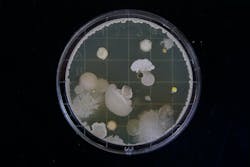The Georgia Department of Public Health is investigating a fatal case of Burkholderia pseudomallei infection (melioidosis) identified in late July 2021, according to the Centers for Disease Control and Prevention (CDC), which is assisting in the case and issued an official health advisory.
Based on genomic analysis, the CDC said the case in Georgia closely matches the three cases previously identified in Kansas, Minnesota, and Texas earlier in 2021, indicating they all most likely share a common source of exposure.
Melioidosis, also called Whitmore's disease, is an infectious disease that can infect humans or animals. The disease is caused by the bacterium Burkholderia pseudomallei and is primarily a disease of tropical climates, especially in Southeast Asia and northern Australia.
The four cases include both children and adults. Two cases are female, and two cases are male. The first patient, who died, was identified in March 2021 in Kansas. The second and third patients, both identified in May 2021 in Minnesota and Texas, were hospitalized for extended periods of time before being discharged to transitional care facilities. The most recent patient died in the hospital and was identified post-mortem in late July 2021 in Georgia.
None of the cases had a history of traveling outside of the continental United States.
Melioidosis is confirmed by culture and with testing conducted by trained personnel since some automated identification methods in clinical laboratories may misidentify B. pseudomallei as another bacterium.
In contrast to other healthcare personnel, laboratory staff members are at risk because some procedures may aerosolize particles and release B. pseudomallei into the air, the CDC said.
Symptoms of melioidosis are varied and nonspecific, and may include pneumonia, abscess formation, and blood infections. Due to its nonspecific symptoms, melioidosis can initially be mistaken for other diseases such as tuberculosis, which can delay proper treatment. B. pseudomallei may also be misidentified by some automated identification methods in laboratory settings.
B. pseudomallei is not considered to be transmitted via air or respiratory droplets in non-laboratory settings. Person-to-person transmission risk is considered extremely low as there have only been a few documented cases of person-to-person transmission; contact of damaged skin with polluted soil or water is the most frequent route for natural infection.

